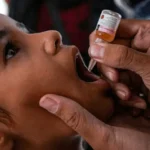Switzerland, 01 Nov, 2024: The World Health Organization (WHO) has officially launched a comprehensive Strategic Preparedness and Response Plan (SPRP) aimed at halting the ongoing human-to-human transmission of mpox through globally coordinated efforts. This initiative follows the declaration of a public health emergency of international concern by WHO Director-General Dr. Tedros Adhanom Ghebreyesus on August 14.
Member States, who were briefed on the plan on August 23, are expected to provide input as the WHO rolls out this critical response strategy, which will be implemented over a six-month period from September 2024 to February 2025. The plan requires an estimated $135 million to fund the necessary activities across global, regional, and national levels. Partners in this endeavor include the Africa Centres for Disease Control and Prevention (Africa CDC), community groups, researchers, and other key stakeholders.
A funding appeal to support the plan’s objectives will be launched soon, underscoring the urgent need for resources to curb the mpox outbreak.
Also Read: WHO Urges Swift Approval of Mpox Diagnostic Tests Amid Rising Cases in Africa
The SPRP is built on recommendations from the WHO Director-General and focuses on several key areas: comprehensive surveillance, preventive measures, outbreak readiness, and response strategies. The plan also emphasizes advancing research and ensuring equitable access to critical medical countermeasures such as diagnostic tests and vaccines. Efforts to minimize animal-to-human transmission and empower communities to engage in prevention and control activities are also central to the strategy.
Strategic vaccination initiatives will target high-risk groups, including close contacts of mpox cases and healthcare workers, to break the chains of transmission.
At the global level, the WHO will provide strategic leadership, timely, evidence-based guidance, and ensure access to medical countermeasures for those most at risk. The organization is collaborating with a wide range of international, regional, national, and local partners to enhance coordination in preparedness, readiness, and response efforts. This includes working closely with the ACT-Accelerator Principals group, the Standing Committee on Health Emergency Prevention, Preparedness and Response, the R&D Blueprint for Epidemics, and the interim Medical Counter Measures Network (i-MCM Net).
In support of these efforts, the WHO R&D Blueprint, together with Africa CDC, the Coalition for Epidemic Preparedness Innovations (CEPI), and the National Institute of Allergy and Infectious Diseases, will host a virtual scientific conference on August 29-30, 2024, to align mpox research with the goals of outbreak control.
Also Read: Bacterial and Viral Infections: Causes, Symptoms, and Essential Prevention Tips
“The mpox outbreaks in the Democratic Republic of the Congo and neighboring countries can be controlled and ultimately stopped,” said Dr. Tedros. “Achieving this requires a comprehensive and coordinated plan of action involving international agencies, national and local partners, civil society, researchers, manufacturers, and our Member States. This SPRP provides that plan, grounded in principles of equity, global solidarity, community empowerment, human rights, and cross-sectoral coordination.”
The WHO has established incident management support teams at its headquarters and regional offices to lead the preparedness, readiness, and response efforts, significantly ramping up staff in affected countries. Within the African region, where the need is most acute, the WHO Regional Office for Africa (AFRO) will work closely with Africa CDC to coordinate response activities. Both organizations have agreed on a unified plan and budget approach under the Africa Continental Mpox Strategic Preparedness and Response Plan, currently under preparation.
Health authorities at the national and sub-national levels will adapt their strategies in response to evolving epidemiological trends, ensuring that efforts remain aligned with the latest data and challenges on the ground.













